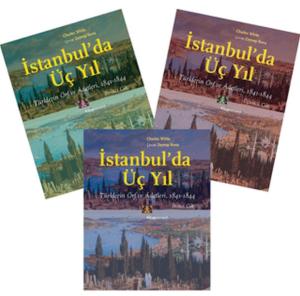9789757710103
439252

https://www.munzevikitabevi.com/a-garden-for-the-sultan
A Garden For The Sultan
166.00
Beautiful beyond description, Professor Emeritus Nur-han Atasoy's thirty long years collection of notes on Ottoman flowers and gardens have been transformed into a definitive look at the Ottoman garden and the Turkish love of flowers. The beautifully written desc-riptions and explanatory notes are accompanied by 445 photographs and reproductions.
For the Ottomans, flowers meant passion, tenderness, visual joy. Gardens were a synecdoche for the order of the world and for evocation of paradise. Mehmed II, Conqueror of Istanbul, posed for a miniature painting, not brandishing a sword, not displaying a panoply of power, but smelling a flower.
The Ottomans, according to some foreign observers, had a universal love of flowers. That love suffused the Ottoman visual arts: flower motifs gave vigor to fabric designs, book covers, miniature paintings, illuminations, tiles and textiles, utensils and decorative pieces. Flowerpots were the diadems of windowsills. Ottoman imperial gardens often retained an atavistic nomadic flavor of asymmetry: They seldom possessed the geo-metric perfection of Alhambra, Medici, Versailles or Shiraz. Theirs was an order of passion. The masterpieces of the genre crowned the Suleymanic age (16th cen-tury) and the Tulip Age (18th century)
Beautiful beyond description, Professor Emeritus Nur-han Atasoy's thirty long years collection of notes on Ottoman flowers and gardens have been transformed into a definitive look at the Ottoman garden and the Turkish love of flowers. The beautifully written desc-riptions and explanatory notes are accompanied by 445 photographs and reproductions.
For the Ottomans, flowers meant passion, tenderness, visual joy. Gardens were a synecdoche for the order of the world and for evocation of paradise. Mehmed II, Conqueror of Istanbul, posed for a miniature painting, not brandishing a sword, not displaying a panoply of power, but smelling a flower.
The Ottomans, according to some foreign observers, had a universal love of flowers. That love suffused the Ottoman visual arts: flower motifs gave vigor to fabric designs, book covers, miniature paintings, illuminations, tiles and textiles, utensils and decorative pieces. Flowerpots were the diadems of windowsills. Ottoman imperial gardens often retained an atavistic nomadic flavor of asymmetry: They seldom possessed the geo-metric perfection of Alhambra, Medici, Versailles or Shiraz. Theirs was an order of passion. The masterpieces of the genre crowned the Suleymanic age (16th cen-tury) and the Tulip Age (18th century)
Yorum yaz
Bu kitabı henüz kimse eleştirmemiş.













